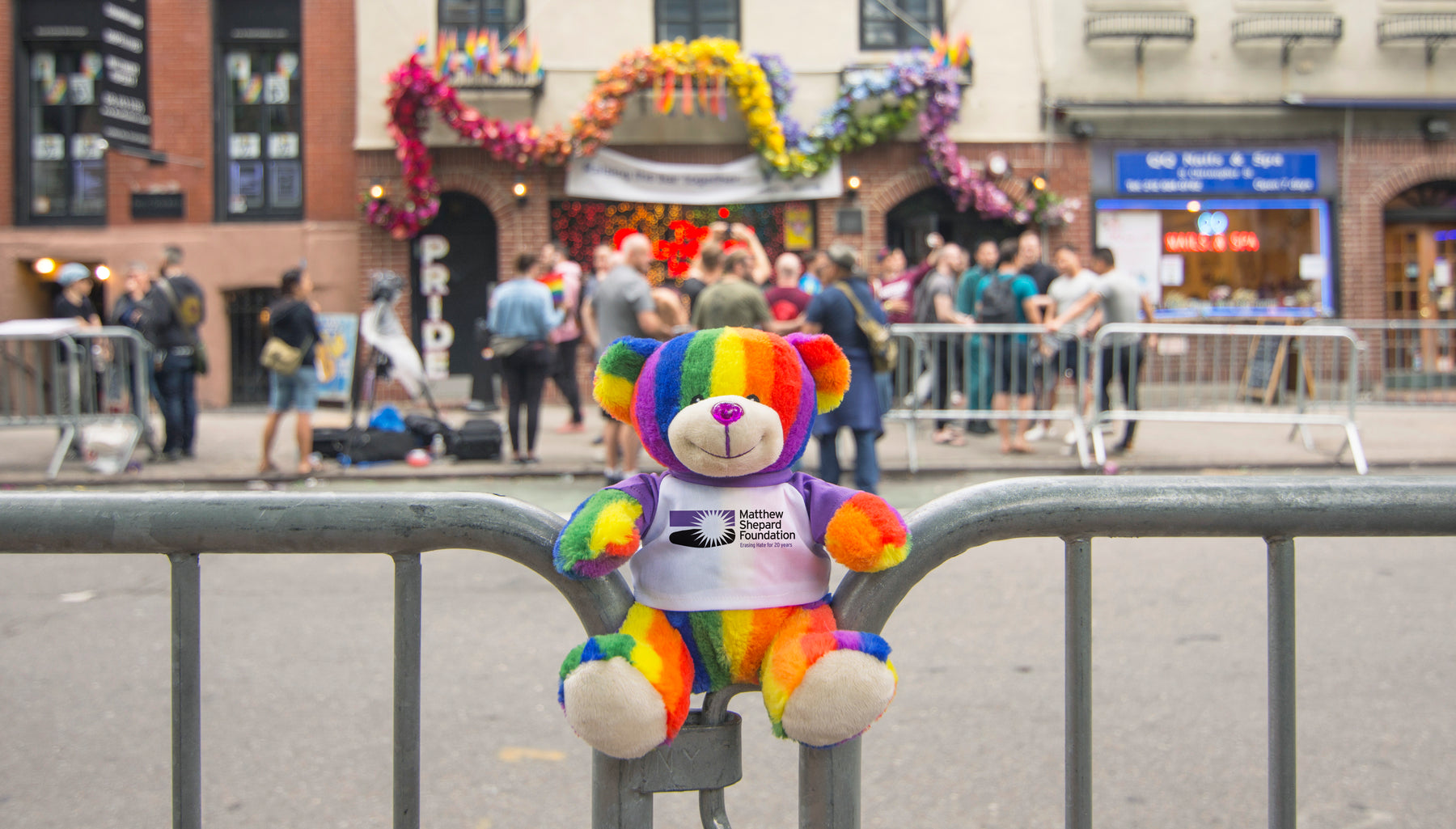
Totally Pride Teddy at Historical Pride Sites
To celebrate Pride month as well as Bear Buggy®’s new Totally Pride Teddy, we set out to photograph the bear in front of a handful of sites significant to LGBTQ history. Some of the sites are still functioning, while others still stand but in a different capacity. These locations were subjectively chosen; we could have photographed our Pride bear in front of thousands of different sites, so we had to narrow it down significantly. These five locations represent places of shelter and community, decisive hate crimes, beacons of self-expression.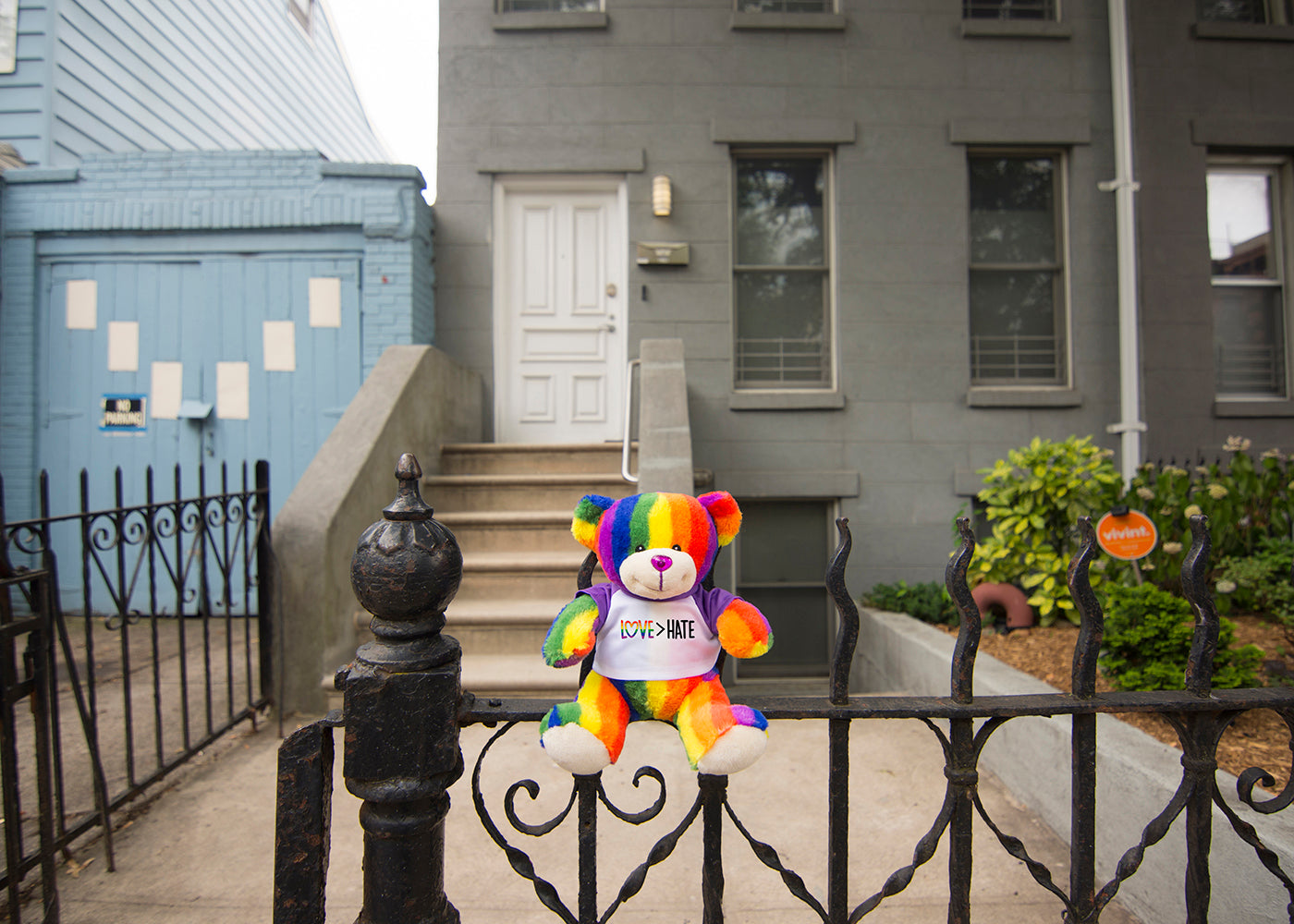
Transy House
The Transy House, originally built in the 1860s, stands at the cusp of Park Slope and South Slope in Brooklyn, NY. On its exterior, the rowhouse is rather unassuming; a small two-story bluish gray building with a front door painted a medium white. The building’s unassuming nature starts and ends there, though. From 1995-1998, the house not only served as a shelter for trans and gender non-conforming people in need, but also as a center for trans activism. The Transy House was home to as many as 13 people at a time. The house was the last residence of pivotal trans activist Sylvia Rivera, who fought for the rights of LGBTQ people and people of color who remained marginalized by the mainstream gay liberation movement.
Location of Ali Forney’s murder
There are so many cold cases throughout queer history. As with most minority groups, mainstream police departments, non-profit organizations, and justice systems often neglect crimes committed unto LGBTQ people. This problem is exacerbated with communities and people who identify as more than one minority, such as trans or non-conforming people of color. One such crime occurred on the night of December 5, 1997, when Ali Forney — a homeless gender non-conforming youth of color — was murdered in front of a Harlem housing project. The murder, which happened on the corner of East 135th St. and 5th Ave., remains unsolved. However, about five years after Forney’s killing, the Ali Forney Center was founded. Today, it’s “the country’s largest shelter and medical facility for homeless LGBT youth.”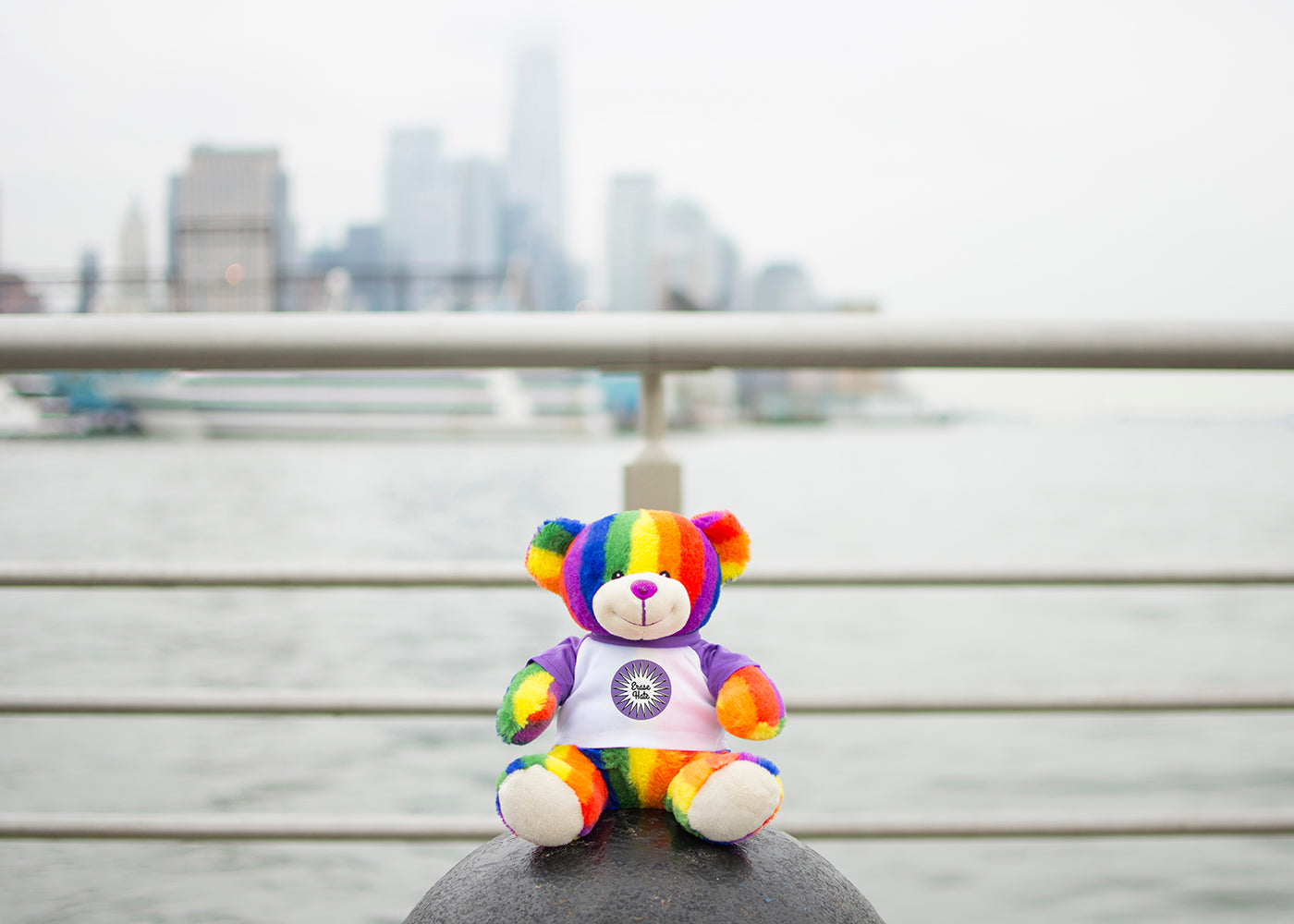
Christopher St. Pier (Pier 45)
For more than a hundred years, the Hudson River waterfront along Manhattan's Greenwich Village — including the Christopher St. Pier — was a destination for the LGBTQ community. The type of destination evolved over time, from being a place for gay men to find partners to being a safe haven for marginalized communities, including mostly queer homeless youth of color. In July 1992, Marsha P. Johnson’s body was found floating at the end of the Christopher St. Pier. Marsha P. Johnson, a Black trans woman, had worked alongside activists like Sylvia Rivera and was active since before the Stonewall Riots. When her body was found in the water at the end of the pier, police ruled it as a suicide. The queer community insisted that it was a murder, a hate crime. There was even eyewitness testimony to support this, but police shrugged that off as circumstantial and maintained their hasty suicide ruling. To this day, her death remains unsolved. The Christopher St. Pier of the 20th century no longer exists. In the late 1990s, the Hudson waterfront was rebuilt into today’s Hudson River Park. Pier 45, where this image was taken, exists roughly in the same location as the Christopher St. Pier.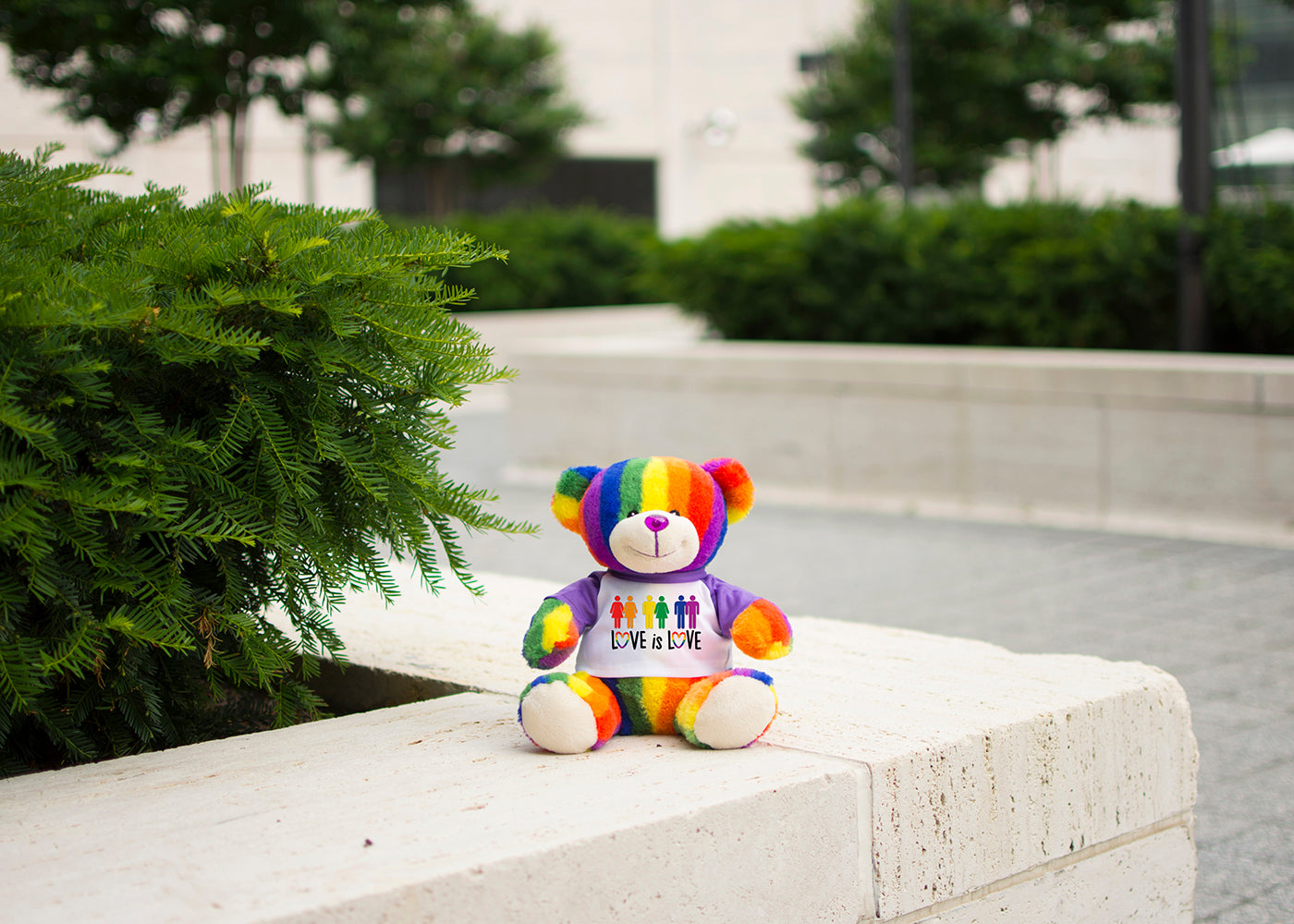
Lincoln Center
The Lincoln Center has been a queer space, often a venue for queer culture, from the beginning. Openly gay architect Philip Johnson was one of the lead designers of the New York State Theater — now the David H. Koch Theater — completed in 1964 in Midtown Manhattan to be the home of the New York City Ballet. The theater’s east lobby contains a sculpture called “Numbers, 1964,” by Jasper Johns, a well-known but private gay artist. The New York City Opera moved into this theater shortly after it opened and remained there until 2010. The company featured openly gay and lesbian singers and performed the operas of significant 20th century gay composers like Leonard Bernstein. When Philharmonic Hall — now David Geffen Hall — opened in 1962, Leonard Bernstein conducted the inaugural concert. In 1966, the Metropolitan Opera House opened and over the next 50 years presented pivotal works conducted, choreographed, and designed by a variety of queer artists. Damrosch Park, at the southwest corner of the Lincoln Center, where this image was taken, also has a decidedly queer history. In 1986, in the midst of the AIDS epidemic, the Gay Men’s Health Crisis sponsored the first AIDS Walk, which began at Damrosch Park. Each year since, the AIDS Walk has been an important fundraising and memorial event.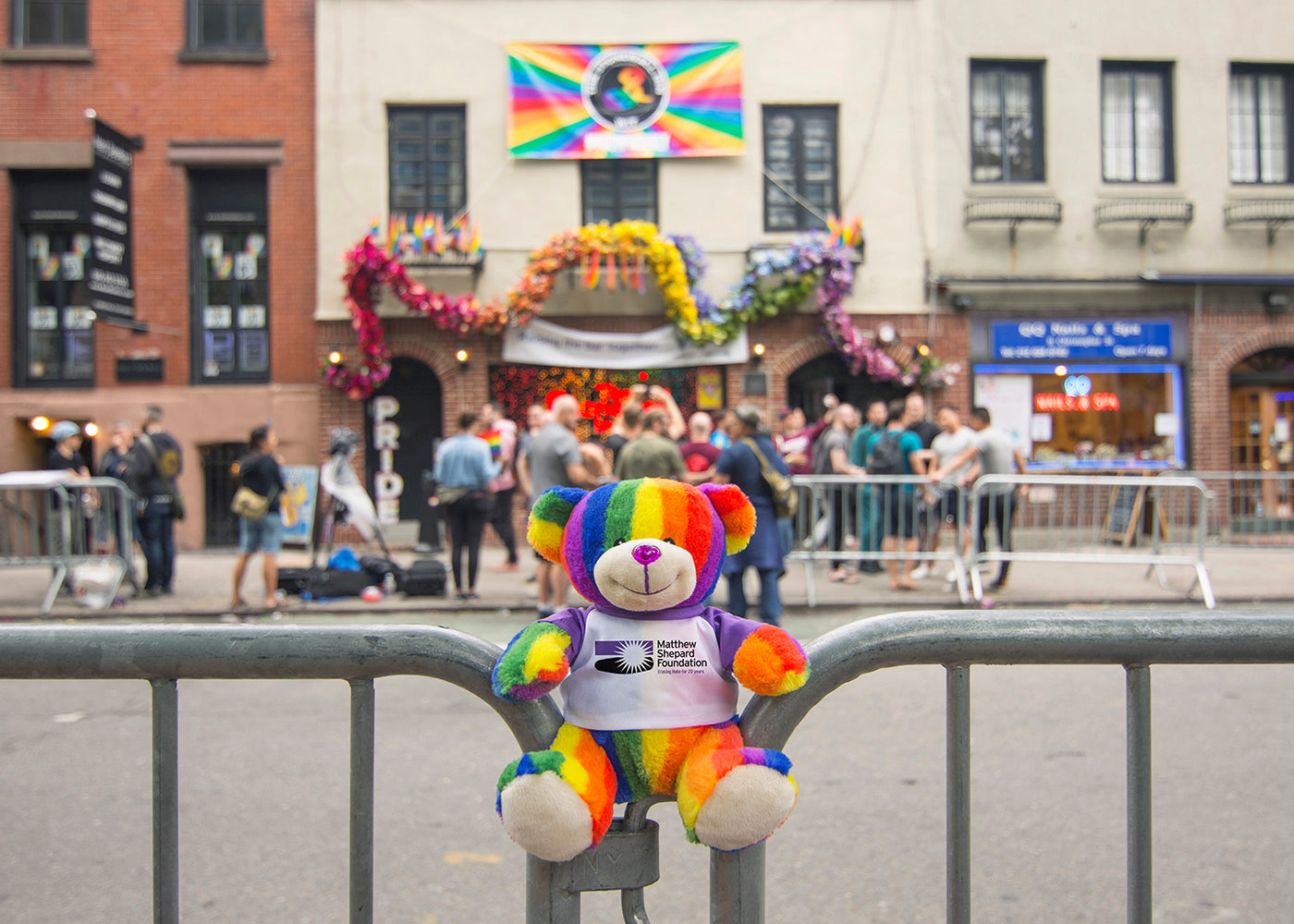
Stonewall Inn
The birth of the modern LGBTQ rights movement happened over a course of 6 days in the summer of 1969. From June 28 to July 3, 1969, patrons of Stonewall Inn, a gay bar, members of the local LGBTQ community, and activists rioted against a routine police raid at the Manhattan bar. It’s important to note that Stonewall was not the beginning of the movement, rather it has been described by historians as “the shot heard round the world…crucial because it sounded the rally for the movement.” In 1994, Frank Kameny, an LGBT rights pioneer described the impact of Stonewall as such, “By the time of Stonewall, we had fifty to sixty gay groups in the country. A year later there was at least fifteen hundred. By two years later, to the extent that a count could be made, it was twenty-five hundred…” The location has changed hands several times since the riots. The original Stonewall went out of business soon after the riots and was replaced by several restaurants over the next decade. In 1987, a bar named Stonewall opened at the site of the original, but only remained open for two years. The current Stonewall opened, once again at the site of the original, in 1993. Stonewall is now widely recognized as a symbol of solidarity and queer civil rights, and that symbolism is supported by the mainstream. In 2000, Stonewall and the surrounding area was named a National Historic Landmark. In 2016, President Barack Obama named Stonewall a National Monument.
